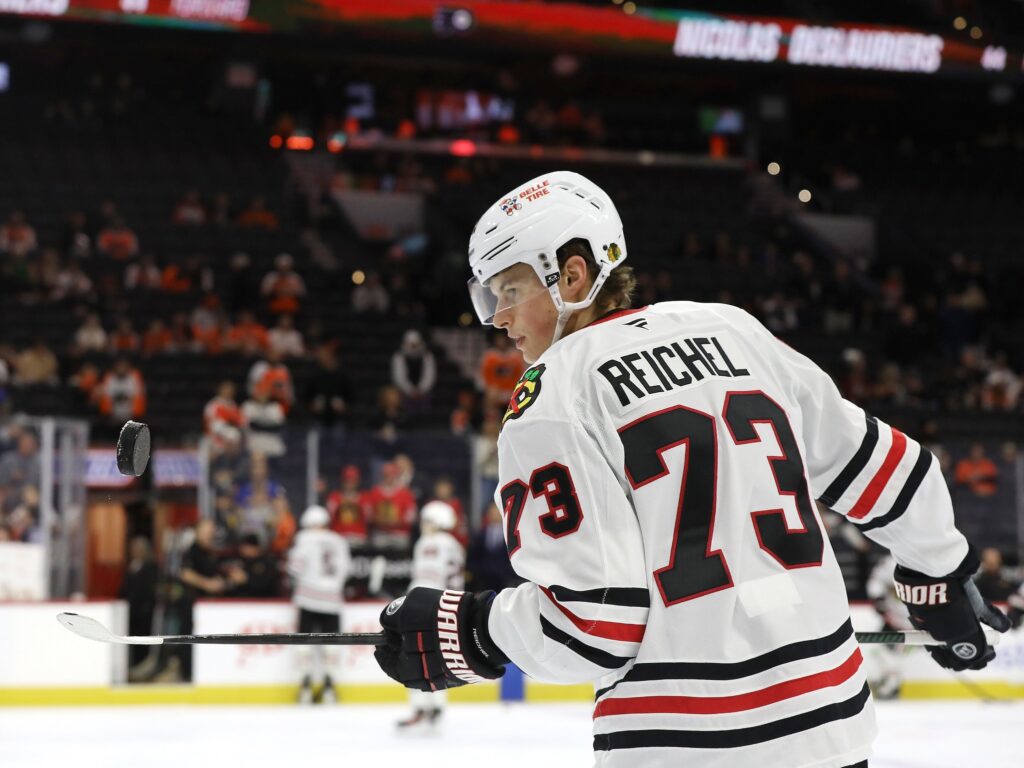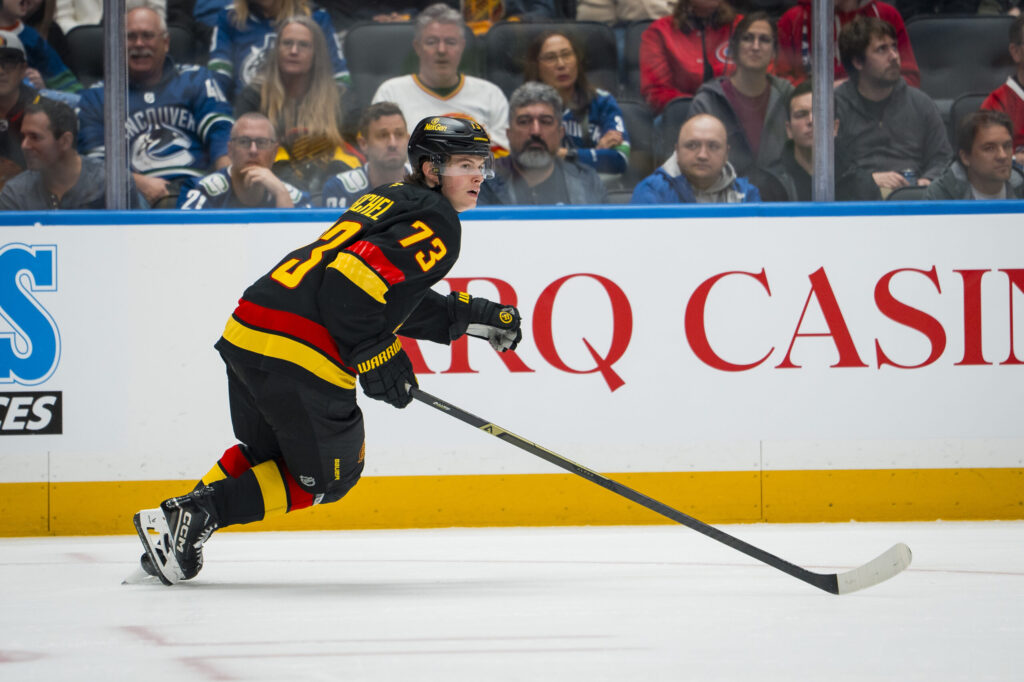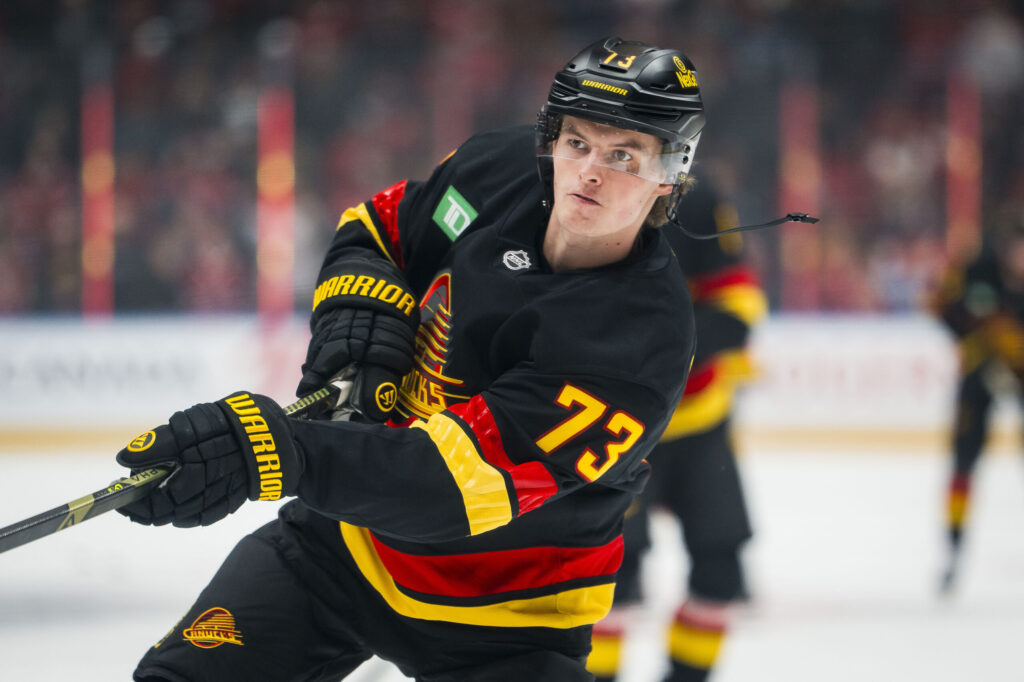The trigger was finally pulled.
In a move that sends ripples through two different fanbases—one invested in a rebuild, the other desperate for playoff depth—the Chicago Blackhawks traded forward Lukas Reichel to the Vancouver Canucks on Friday.
The return for Chicago is a 2027 fourth-round pick, a selection, fittingly, that was originally their own and re-acquired in the 2024 Ilya Mikheyev deal. The Blackhawks retained no salary on Reichel’s contract, which carries a modest $1.2 million cap hit for one more season.
Also on the EDGE – Canucks Under Siege: Injuries & Cap Gymnastics Force Roster Shuffle
For Chicago, the deal closes the book on a “long-lasting saga” surrounding a frustrating first-round talent. For Vancouver, it’s a low-risk, needs-based acquisition of a 23-year-old “change-of-scenery” player who is, by necessity, about to be thrown into the fire.
The End of a “Long-Lasting Saga” in Chicago
To understand why Chicago moved on, you have to go back to the 2020 NHL Entry Draft. When the Blackhawks selected Reichel 17th overall, it was immediately labeled a “reach” by a consensus of scouts and analysts, who had the German forward pegged as a late-first or early-second-round talent.
The organization, however, was betting on his skill.

Initially, the bet looked promising. Reichel dominated at the AHL level, lighting up the scoresheet with 57 points in 56 games for the Rockford IceHogs in 2021-22. He seemed to have graduated. After the 2023 trade deadline, with the shadows of Patrick Kane and Max Domi gone, Reichel was given top-line minutes and responded with 15 points in 23 games.
It turned out to be a mirage.
That burst of production was powered by an unsustainable 16.7% shooting rate. Once the league got a book on him and that percentage inevitably regressed, his effectiveness “dried up.”
Reichel possessed one elite, undeniable tool: speed. He was excellent at carrying the puck and gaining the offensive zone with possession. But once inside the zone, the rest of his toolkit failed to emerge. He became a perimeter player, and his production flatlined. The final tally in Chicago: 58 points in 176 career games.
He was the classic “tweener”—too skilled for the AHL, but not steady, consistent, or versatile enough for a top-six role in the NHL. He wasn’t a checker, and he wasn’t a scorer.
With only one year left on his “prove it” contract and other forward prospects like Frank Nazar and Oliver Moore banging on the door, Reichel’s time had run out. Reports confirmed Reichel had requested a trade, and while his agent maintained relations were professional, the writing was on the wall. Chicago needed to cut bait on a diminishing asset and officially acknowledge a draft-and-develop failure.
Speed Kills, But Can It Center a Line?
While Chicago was looking for a way out, Vancouver was looking for a way in.
The Canucks’ acquisition of Reichel wasn’t a luxury; it was an act of necessity. The team’s center depth was decimated by injuries, most notably to Filip Chytil (suffering from a likely concussion) and Teddy Blueger. The void was immediate, and General Manager Patrik Allvin found a potential plug for the price of a mid-round pick three years from now.
The intrigue lies in Reichel’s new deployment. In Chicago, he was almost exclusively a winger. In Vancouver, he is being thrust directly into the middle, centering a second line between established veterans Brock Boeser and Evander Kane.
This is the opportunity Reichel has been waiting for, and it’s a gamble by the Canucks’ staff. Allvin praised Reichel as a “talented playmaker” and expressed confidence that the coaching staff can unlock his consistency.

The primary asset they’re banking on is that speed. Reichel is a legitimate burner, rated in the 96th percentile in the NHL for max skating speed (23.04 mph). For a Canucks team that can get bogged down in its own end and struggle with counterattacks, Reichel’s ability to transport the puck through the neutral zone with pace is a weapon they simply did not have.
He also arrives in Vancouver with a hot hand. Despite his team-wide struggles in Chicago, Reichel had started the 2025-26 season productively, posting two goals and two assists for four points in five games. That production would have tied him for third in Canucks scoring at the time of the trade.
The $1.2 Million Question: Red Flags and Potential
This is a reclamation project, plain and simple. And like any project, it comes with risks.
The first and most glaring challenge is the position change. Reichel’s career faceoff winning percentage is a dismal 40.5%. While he showed “much better results” in the circle in a recent game versus Edmonton, turning a career winger into a viable second-line center in the NHL is a monumental task. He will be targeted by opposing coaches immediately.
The second issue is his build. At 6’0″ and 170 lbs, Reichel is another undersized forward in a lineup that has often been pushed around by bigger, heavier opponents in the Western Conference. Asking him to take on the defensive responsibilities and physical grind of a center is a massive leap of faith.
And then there’s the core issue that led him out of Chicago: consistency. Can he be an impact player when he isn’t scoring? Can he find a way to contribute when his shot isn’t going in?
What he does have on his side is a new environment. The pressure is fundamentally different. In Chicago, he was the 17th overall pick, a perceived cornerstone of the rebuild, expected to justify his draft slot. In Vancouver, he’s the low-cost acquisition, a supporting-cast member brought in to fill a hole. That relief from the spotlight could be precisely what he needs to rediscover his rhythm.
Final Verdict: A Calculated Gamble vs. Cutting Bait
When the dust settles, how does this trade look for both sides?
For the Vancouver Canucks: B- This is a smart, calculated gamble. The cost is negligible—a 2027 fourth-round pick is organizational pocket change. The upside, however, is substantial. If Reichel can find his footing and provide even 35 to 40 points while holding his own at center, he becomes one of the best-value players in the league at a $1.2 million cap hit. He fills an immediate, desperate need and gets a chance to prove he belongs.
For the Chicago Blackhawks: C- This is the unfortunate price of a sunk cost. A fourth-round pick is a paltry return for a player drafted 17th overall just five years ago. It’s an admission of failure. That said, Reichel was a depreciating asset who wanted out, and his “prove it” deal was proving the wrong point. GM Kyle Davidson got something for a player who likely had no future with the organization, clearing a path for other prospects. It’s a bitter pill, but one they had to swallow.
Ultimately, Reichel gets the reset his young career desperately needed. The Blackhawks get to turn the page. And the Canucks get a low-cost, high-speed lottery ticket, hoping his change of scenery is all it takes to turn a former first-round disappointment into a second-line solution.
Created with the aid of Gemini AI
